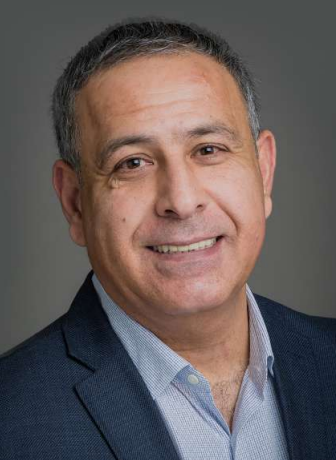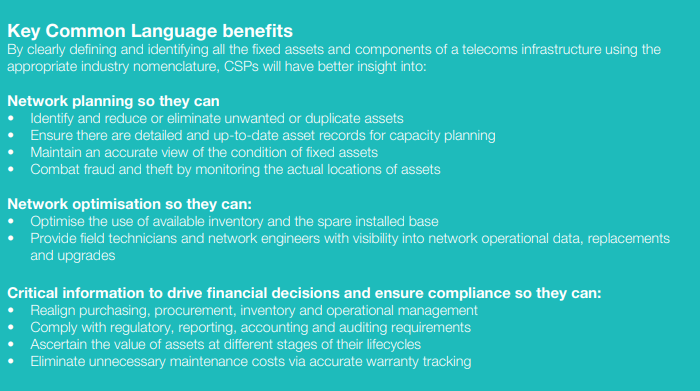Business strategies that involve 5G, edge computing and virtualised networking demand a universal structure for the deployment, interconnection and management of the physical and virtual assets these capabilities require. Essentially, the same terminology must be used to enable different domains within a communications service provider (CSP) to have visibility into each other and for external organisations, such as partners and vendors, to share the same language. Here, Eyad Alqadi, the regional sales director for EMEA at iconectiv, and John Hayes a senior director at iconectiv, explain to VanillaPlus managing editor, George Malim, how a universal structure has been used by service providers in the past and how it can reduce time to revenue for innovation investments, while offering competitive advantage in the race to expand into key markets.
The company estimates that CSPs have been losing up to 20% of their annual capital expenditure – to the tune of US$65 billion industry-wide – because of poor communication, mislaid assets and mismanaged inventory. These are a direct result of critical data being scattered throughout their organisations in a variety of formats and managed by different business functions. This makes sharing information and effective collaboration difficult, if not impossible. iconectiv’s TruOps Common Language was designed to aid communication between systems for CSPs whose operations involve an overwhelming amount of moving parts. Common Language provides a way to standardise how an ecosystem refers to locations, equipment, circuit paths and service use, enabling comprehensive visibility into asset performance and value.
George Malim: CSPs are under significant pressure to sustain revenue growth and profitability while delivering new digital services. Regulations, technology disruptions, intensifying competition and changing customer demands are also placing them at a crossroads. Business growth increases operational complexity and costs, which in turn increase potential for errors and risk to profitability, so how can CSPs streamline asset management processes and reduce time to revenue?

Eyad Alqadi: From our experience, communication service providers can’t manage something efficiently if they have no visibility into it. Having talked to many CSPs around the globe, it’s clear that many don’t have visibility into their assets because these are in various locations, sometimes in different countries and often managed in siloes. In addition, the industry’s past track record of mergers and acquisitions has seen the practices of different companies brought together under a single banner – but not a single language. This is likely to continue in future waves of consolidation and diversification well into the digital era, so making sure there is better visibility into assets remains a number one requirement.
Having visibility is important because it means CSPs can maximise the utilisation of its assets. It’s critical and it is where we can be of help to CSPs so they can increase their revenues by creating a unified view of their assets.
John Hayes: If you look at a CSP, it has a number of internal systems that are used in order to operate its business. In finance for example, you have enterprise resource planning (ERP) systems, while in operations there are different inventory management systems and, in planning and engineering, there are network design systems. Each of these systems, while fit for their respective purpose, are the responsibility of different organisations within the company and the ways in which organisations represent assets can vary.

You can readily manage your own domain of responsibility in this way but that variation means you can’t manage end-to-end because there is no coordination across different domains. You can’t get insight into business performance because it’s very hard to align different views. Think of three fruit companies, one that values an apple based on the amount of juice that can be squeezed from it, one that values the apple on its total weight and one that considers all of its apples as a single unit with a single value – and then try to decide which offers the cheapest apple.
You could have a financial system that captures all the in-service information and that’s valuable because it has information about the assets and what the investment into them has been, but unless you can align financial systems with operational systems you don’t get to the picture of how they are used and how they can be maximised.
What we are pushing towards is to make sure the information we have is used consistently across the CSP to enable each organisation to manage its part of the asset lifecycle in an appropriate way, and then also to conform to a common platform to enable different views to be seen together.
GM: What variations do you see and how can Common Language help to ensure different domains see assets in the same way?
JH: It depends on how a CSP does things. If, for example, a CSP chooses to describe an asset in one place and then move it to another, visibility is lost as other domains may not be able to track the asset. Another example would be if a financial organisation represents an asset as part of a selection of items – as with the apple wholesaler – rather than an individual asset in its own right. In that scenario, CSPs can’t extract that asset-specific information that enables them to optimise.
We also see that each organisation within a CSP tends to have its own way to name items, which is not consistent across the company. At one CSP in the Middle East, we did a location analysis and found 12 different ways in which an asset was represented based on the different organisations with domain responsibility. Naming presents some quite serious challenges for gaining unified visibility across an organisation.
For example, an address could be entered as: One Main Street, One Main St., 1 Main Street, 1 Main St or several other variations. All of these are accurate but not exact so, when systems require exact matches, data can get lost. These types of inconsistencies are ways in which asset information can be lost within a company. When it comes to database hygiene it is understood that without a common nomenclature, errors get introduced by simple inconsistencies such as the address example.
To remedy this, data governance needs to be put in place with the discipline to enforce data standards. If this is done utilising a common platform, when someone within a CSP wants to move an asset from one place to another it can be visible to all. This is in contrast to the current situation in some CSPs where finance, for instance, does not get the same view as operations. That then creates a misalignment between the two and that makes management of the business less efficient. The alignment is essential to maximise efficiency.
GM: CSPs have invested billions in their operational technology (OT) in the form of network infrastructure – both fibre and 5G – but knowing what they have and where it is, is fundamental to being able to deliver the wider array of services that new networks enable. How can CSPs prepare for the new era of dynamic, automated network capacity and maintain an accurate view of their assets across multiple networks and territories?
JH: There are different levels of complexity taking place. If you look at tower infrastructure companies such as American Tower or Crown Castle in the US, they were originally real estate companies that allowed CSPs to lease space in their towers to place equipment. CSPs then swiftly realised that if you share network components you get economies of scale. Tower companies now are acquiring fibre operating networks and providing services such as backhaul and mobile edge computing.
This introduces a whole new level of complexity because the end-to-end network isn’t the CSP’s anymore. Within that, the model is not the same as traditional interworking and it’s not just a case of having a common language for managing hardware assets because the scope has changed to encompass software as well. Virtualisation of equipment also needs to be considered and taken into this common platform so all stakeholders have visibility and can understand, not only their own domain and business but how it and their resources fit into the complete service delivery and revenue chain.
GM: Do the full benefits of a common platform demand that all players in the value chain utilise the same terminologies?
EA: There are two aspects here. One is internal to the CSP and this definitely needs a common platform that connects all the stakeholders within an organisation so they can have a common view of all their assets. The second aspect is external and centres on location and connection. From an efficiency point of view, understanding locations and availability of resources across different companies is needed and commonality becomes critical because it saves cost for everyone. That has become critical and is a value that Common Language can bring.
GM: What about compliance with regulations such as the Fixed Asset Register requirements; how are CSPs approaching this when it comes to a common platform?
EA: From a practical point of view when you look at CSPs, every stakeholder has different objectives and drivers for how they view their assets. Finance organisations are ultimately responsible and have the driver of ensuring that all assets are accounted for and valuation is accurate because they have to comply with regulations, and they are responsible to auditors, the board and shareholders.
If we talk to an engineering department, however, you will find that they do not share the same issues and challenges. This is why Common Language is important – because it brings them all together. Stakeholders can then talk together and share the same view of the same assets and that has value in addressing finance departments’ requirements but also for partners and vendors.
A common platform helps improve collaboration across the organisation and with partners and vendors so utilisation is maximised and efficiency is improved. Without collaboration, we see the damage of stakeholders working independently of each other in terms of assets. We’ve seen assets duplicated with a router or switch being ordered that was already available in the CSP’s warehouse, for example. iconectiv Common Language enables the utilisation of all assets to be maximised.
GM: What is iconectiv doing here to address CSPs’ concerns and enable improved efficiencies in the new era of connectivity?
EA: We view ourselves as enablers to bridge the gap internally within organisations but also externally with partners and vendors. We’ve created Common Language as the standard, centralised data information solution for vendors to adopt over the years, and it is constantly updated and evolving as new technology and services emerge. We think this is essential to support CSPs and the wider ecosystem as it continues to transform, virtualise and involve greater numbers of stakeholders. To have visibility into this heightened complexity, utilising the same terminology and sharing a Common Language is an essential component for optimised operations.

Comment on this article below or via Twitter: @ VanillaPlusMag






